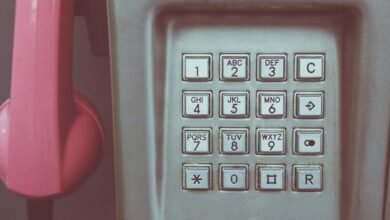Trace Unknown Digits 3519173184 3271133342 3761181268 3509610775 3511616992 3756695221

Tracing unknown digits such as 3519173184, 3271133342, 3761181268, 3509610775, 3511616992, and 3756695221 can reveal meaningful patterns and connections. Various techniques, including reverse phone lookup services, can assist in identifying these numbers. However, individuals must navigate the complexities of privacy and security that accompany such inquiries. Exploring the implications of these methods raises critical questions about the boundaries of personal information and the pursuit of knowledge in this context.
Understanding the Significance of Unknown Digits
Understanding the significance of unknown digits is crucial in various mathematical contexts, particularly in problem-solving and data analysis.
Unknown number tracking relies heavily on identifying these digits, as they can provide insights into patterns and trends.
Furthermore, digital fingerprinting utilizes unknown digits to distinguish between data sets, enhancing security and accuracy.
Such analysis fosters a greater understanding of complex numerical relationships, promoting informed decision-making.
Techniques to Trace Unknown Numbers
Several effective techniques exist for tracing unknown numbers, each offering unique advantages depending on the context.
Number tracing can be accomplished through reverse phone lookup services, which provide caller identification based on databases. Additionally, mobile applications and social media platforms can assist in identifying unknown callers.
Legal avenues may also be pursued for more thorough investigations when necessary, ensuring privacy considerations are respected.
Implications for Privacy and Security
While tracing unknown digits can provide valuable information, it also raises significant privacy and security concerns.
The collection of data associated with these numbers may lead to unauthorized access, compromising individuals’ confidentiality.
Moreover, the potential for misuse of traced information poses security risks, threatening personal safety and autonomy.
Consequently, a balance must be sought between accessing information and safeguarding privacy rights.
Real-Life Applications of Number Tracing
As technology advances, the real-life applications of number tracing have expanded across various sectors, enhancing functionality and efficiency.
Industries utilize number tracing for pattern recognition and data analysis, allowing for improved decision-making processes. In finance, it aids in fraud detection, while in telecommunications, it optimizes network performance.
These applications exemplify how number tracing contributes to operational excellence and informed strategies in diverse fields.
Conclusion
In the realm of unknown digits, each number acts like a key in a vast, intricate lock, waiting to unveil hidden doors of connection and insight. However, as one navigates this labyrinth, it is crucial to tread carefully. The allure of discovery must be balanced with the respect for privacy, lest one unwittingly trespass into forbidden territories. Thus, the pursuit of knowledge through tracing unknown numbers serves as a reminder of the delicate dance between curiosity and ethical responsibility.




